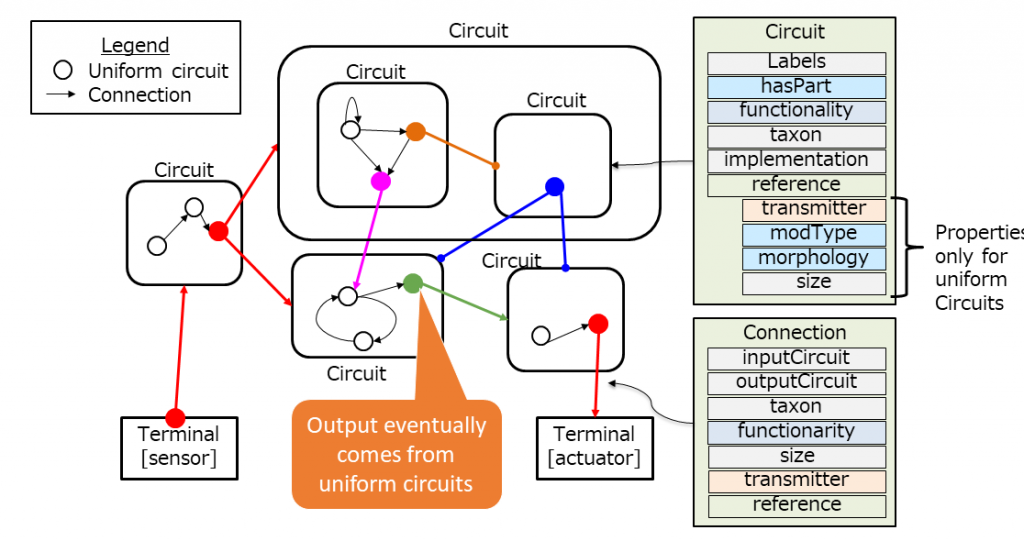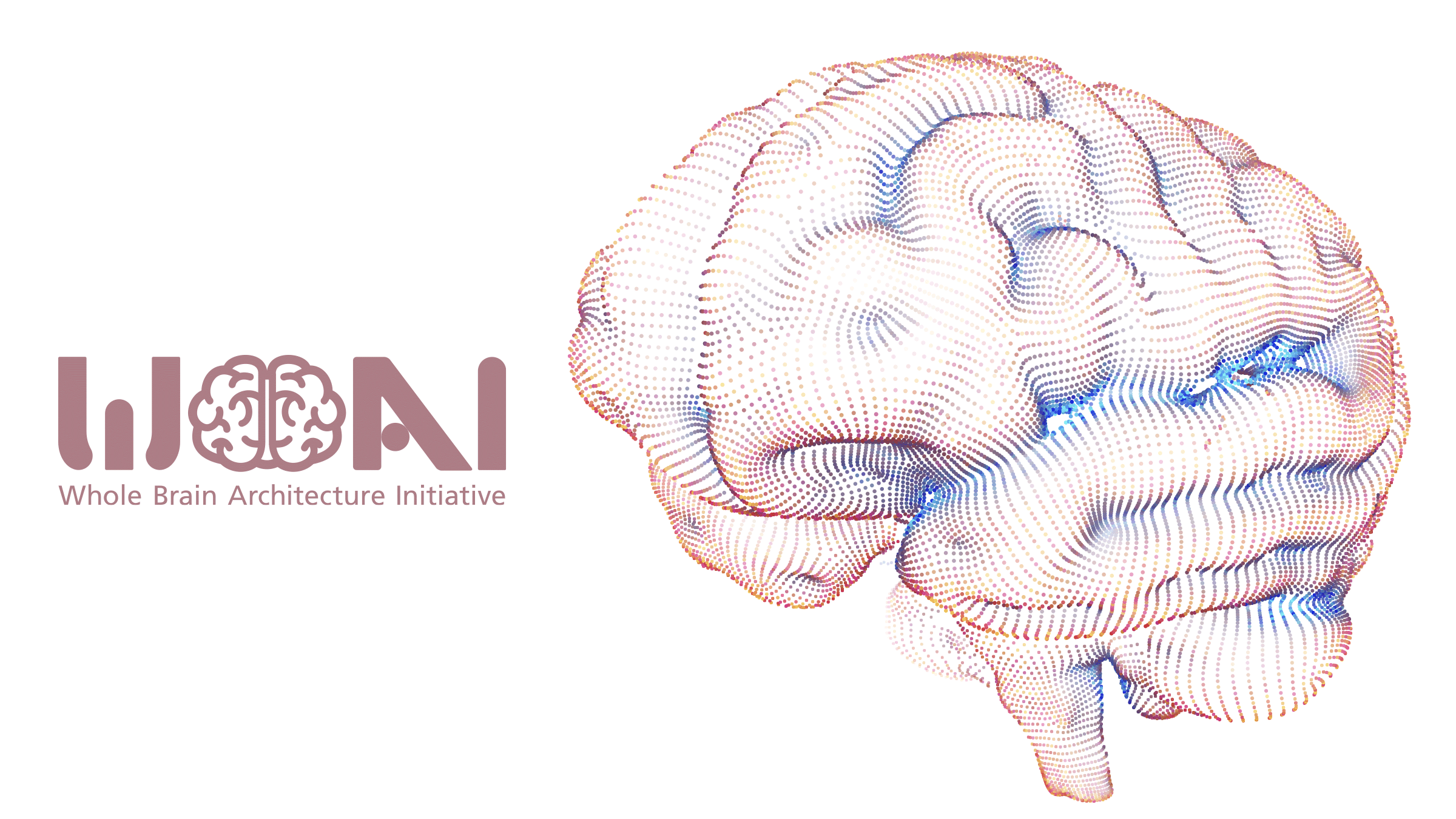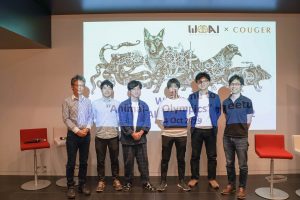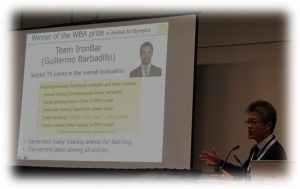Our activities in FY 2019 (from April 2019 to March 2020 — the fifth year) include educational and R&D businesses, implemented according to our policy for FY 2019.
WBAI’s activities have been conducted with non-paid volunteers, except for a paid part-time worker at the secretariat.
Educational Business
The goal of our educational business is to help people who conduct research on the WBA approach on a long-term basis. In FY 2019, WBAI held three WBA seminars and the fourth WBA symposium. We supported the Animal-AI Olympics 2019 (see below) and held two local technical meetups to promote the competition.
WBA Seminars
In FY 2019, WBAI held three seminars (in Japanese) with the following themes and speakers:
- 27th Seminar: July 19, 2019, Probabilistic Graphical Models and the Brain
with Takayuki Osogami (IBM Research Tokyo), Masakazu Ishihata (NTT Communication Science Laboratories), and Hiroshi Ichisugi (Artificial Intelligence Research Center, AIST)
- 28th Seminar: December 6, 2019, Cognitive Models of Sociality
with Yugo Takeuchi (Shizuoka University), Sotaro Shimada (Meiji University), Ryo Nakahashi (Sony Interactive Entertainment), and Takashi Omori (Tamagawa University)
- 29th Seminar: January 31, 2020, Brain and Creativity
with Hironori Nakatani (Tokai University), Kazuhisa Miwa (Nagoya University), and Shimizu Daichi (Tokyo University)
The Fourth WBA Symposium
The symposium was held (in Japanese) at the Panasonic Tokyo Shiodome Building on June 26, 2019 with the theme of “Reexamining the Integration by Learning from the Brain” with speakers Shunichi Amari (honorary researcher, RIKEN), Yutaka Matsuo (University of Tokyo), Shinichi Asakawa (Tokyo Woman’s University), Hiroshi Ichisugi (Artificial Intelligence Research Center, AIST), Koichi Takahashi (RIKEN), and Hiroshi Yamakawa (WBAI). There were also presentations by Masahiko Osawa, Hiroshi Okamoto, Ayako Nunokawa, Masaaki Hieda, Naoya Arakawa, Kosuke Miyoshi, and Takuma Yagi.
It was organized by WBAI and Panasonic Corporation, and supported by the Japanese Society for Artificial Intelligence, Grant-in-Aid for Scientific Research on Innovative Areas “Comparison and Fusion of Artificial Intelligence and Brain Science,” MEXT Post K Exploratory Challenge #4-1 “Understanding the neural mechanisms of thoughts and its applications to AI,” and MEXT “Brain information dynamics underlying multi-area interconnectivity and parallel processing”
In the symposium, the Award for Meritorious Service was presented to Takeshi Sakurada for his contributions to the establishment of the NPO and his advices on the financial, legal, and managerial aspects for the subsequent expansion of the organization. Naoto Yoshida, who conducted research on agents, and Mr. Haruo Mizutani, who contributed to connectome informatics and created and operated the “Niconico AI School” to develop brain-inspired AI workers, were conferred the WBA Incentive Award.
Supporting the Animal-AI Olympics
We supported the Animal-AI Olympics 2019, a contest of attempts to replicate animal intelligence (sponsored by the Leverhulme Centre for the Future of Intelligence) and held two meetups for (potential) participants in Tokyo. We also awarded the WBA Prize at NeurIPS 2019 to an application to the competition which had high biological plausibility.
R&D Business
The goal of our R&D business is to support research activities in the WBA approach.
Development methodology
Since FY 2018, we have been discussing the methodology for the development of brain-inspired AI. In FY 2019, we designed the Brain Information Flow (BIF) Diagram, a description format for the Whole Brain Reference Architecture (WBRA), and developed a platform for building BIF databases.
 Figure 1: Brain Information Flow
Figure 1: Brain Information Flow
The BIF format was proposed to describe a hierarchical information processing in the brain, where Circuits represent networks in the brain. Connections are set up between Circuits with outputs from the Uniform Circuit, which is a population of neurons of a uniform type. In order to support detailed software design, the functions of Circuits and the signal semantics of Connections are annotated.
To evaluate brain-inspired AGI, we have published the GPS criteria consisting of functional generality, biological plausibility, and computational simplicity. The criteria were used to evaluate the applicants of the WBA award at the Animal-AI Olympics.
Collaborating with local research groups (R&D promotion)
We are collaborating with other organizations to develop research infrastructure to support research in the WBA approach. In FY 2019, we conducted joint activities in the following R&D.
Integrated Executive Platforms
RIKEN has been developing an integrated software platform (such as technology to compensate for processing delays) for building WBA.
Establishing a foundation for neuroinformatics
The foundation of WBRA is anatomical (connectomic) structure of the brain. The mouse connectome from the Allen Institute is the most complete mesoscopic connectome in mammals and we have been analyzing it through FY 2018 with its application to WBRA in mind [1]. However, as analysis of the data reveals connections that should not be present, we are doing further analysis of the data to extract reliable connections.
Brain organ frameworks
WBA development requires the description of computational functions on anatomical structures, and frameworks for brain organs such as the neocortex, hippocampus, and basal ganglia. In FY 2019, we developed and formalized (in BIF) the framework for the basal ganglia, for which there is a relatively large amount of neuroscientific knowledge in terms of both structure and function (with the budget of WBAI). When neuroscience knowledge is insufficient to determine a computational function, we need a hypothesis for it. In FY 2019, we proposed hypotheses for the computational function with regard to attention and the basal ganglia [2][3], and for the path integration function of the entorhinal cortex [4]. Further hypotheses related to consciousness [5][6] and the semantics of signals within the neocortex [7] were also examined.
Machine learning
We developed a hierarchical prediction error model focusing on time-series processing, in line with the previously created neocortical Master Algorithm Framework [8] (mainly budget from the University of Tokyo with “Brain Information Dynamics”).
Voluntary groups around WBAI developed a time series decomposition algorithm and a reinforcement learning algorithm with it [9][10][11] inheriting the results of the former Dwango Artificial Intelligence Laboratory.
Research in higher cognitive functions
For the development of brain-inspired AGI, higher cognitive functions, such as planning, need to be realized. To this end, we conducted a survey on the mechanisms of planning in the brain [12] (budget from the University of Tokyo with “Brain Information Dynamics”).
Learning environment simulator
The research of human-or-animal-like AGI agents is facilitated with 3D environments for agents to learn and be evaluated. In FY 2019, the environment called PyLIS with PyBullet, which is relatively easy to modify (budget from the University of Tokyo with “Brain Information Dynamics”) was enhanced.
Requests for Research
Five requests for research were compiled in FY 2019 by ProjectAGI, an AGI research organization based in Australia, which takes the WBA approach and partnered with us in 2017. RFRs also have a role to show paths to the realization of AGI.
Activities to make AGI Beneficial
Because of the potentially large impacts of AGI on humankind, we are conducting activities to make it beneficial, safe, and democratized. In FY 2019, we examined societal challenges in building brain-inspired intelligence [13], published a paper [14] from the point of view of how to utilize advanced artificial intelligence to overcome existential risks brought by the rapid development of new technologies and to find a way for survival.
Publications
[1] Mizutani, H., Ueno, M., Arakawa, N., & Yamakawa, H.: Whole brain connectomic architecture to develop general artificial intelligence. Procedia Computer Science, 123, 308–313, 2018.
[2] Yamakawa, H.: Attentional Reinforcement Learning in the Brain. New Gener. Comput. (2020) doi:10.1007/s00354-019-00081-z
[3] Hiroshi Yamakawa, Which parts of the brain circuit are responsible for attentional mechanisms in machine learning?, Third International Workshop on Symbolic-Neural Learning (SNL-2019), P-22, Tokyo, July 12, 2019. https://www.airc.aist.go.jp/snl/poster.html
[4] Ayako Fukawa, Takahiro Aizawa, Hiroshi Yamakawa and Ikuko Eguchi Yairi: Identifying Core Regions for Path Integration on Medial Entorhinal Cortex of Hippocampal Formation, MDPI Brain Science, 10(1), 28, 2020.
[5] Hiroshi Yamakawa: Consciousness for realize general intelligence in the brain – Modal information is needed for episode -, FUTURAS IN RES Conference: What’s the IQ of AI, Session 4: Consciousness, November 22, 2019. https://www.fraunhofer.de/en/events/whats-the-iq-of-ai.html
[6] Hiroshi Yamakawa: Consciousness Boundary: Claustrum defines the imaginary area of the cortex, 20th Mechanism of Brain and Mind, January 11, 2020. http://brainmind.umin.jp/wt20.html
[7] Hiroshi Yamakawa: The matrix/core path of the thalamocortical circuit viewing from the predictive coding hypothesis, The Eighth International Neural Microcircuit Conference – Synaptic Specificity to Circuit Dynamics, Nagano, January 29, 2020.
[8] Hiroshi Yamakawa, Naoya Arakawa, and Koichi Takahashi: Reinterpreting The Cortical Circuit, AGA 2017: IJCAI Workshop on Architectures for Generality & Autonomy, August 19, 2017.
[9] Masanori Yamada, Heecheol Kim, Kosuke Miyoshi and Hiroshi Yamakawa: FAVAE: Sequence Disentanglement using Information Bottleneck Principle, arXiv:1902.08341 [stat.ML], May 30, 2019.
[10] Heecheol Kim, Masanori Yamada, Kosuke Miyoshi and Hiroshi Yamakawa: Macro Action Reinforcement Learning with Sequence Disentanglement using Variational Autoencoder, arXiv:1903.09366 [cs.LG], June 4, 2019.
[11] Heecheol Kim, Masanori Yamada, Kosuke Miyoshi, Tomoharu Iwata, Hiroshi Yamakawa: Reinforcement Learning in Latent Action Sequence Space, ACML 2019 Workshop on Statistics & Machine Learning Researchers in Japan, Sun42, AICHI, Japan, Sunday November 17, 2019. https://sites.google.com/view/statsmljapan19/accepted-posters
[12] Arakawa, N.: Planning with Brain-inspired AI. In arXiv:2003.12353 [cs.AI], March 25, 2020.
[13] Arakawa, N.: Socially Beneficial Agents with Biologically Inspired Artificial Intelligence, a presentation at the AI to Bridge Borders Conference, Tokyo, Japan, October 10, 2019. http://www.finstitute.jp/collaboration/science/3611-2/
[14] Yamakawa, H: Peacekeeping Conditions for an Artificial Intelligence Society. Big Data and Cognitive Computing, 3(2), 34, June 22, 2019
Financial Statements for FY 2019
The balance sheet and cash flow for FY2019 are presented below (Table 1 and Table 2).
The revenues were 6.27 million yen and the expenditure totaled 1.02 million yen for administration and 3.66 million yen for operation (total expenditure was 4.68 million yen to yield 1.59 million yen surplus).
The businesses of WBAI have been financially supported by sponsors or supporting members. (As of March 2020, there were sixteen supporting members consisting of enterprises and individuals.) Two supporting members at the foundation paid fees for five years in advance, which are recorded as Advance Received on the balance sheet.
Prizes/awards were paid as the WBAI Incentive Award and the WBA Award at the Animal-AI Olympics. Conference expenses include the banquet fees collected from participants (recorded as Other income). Honoraria and travel expenses were paid to the speakers of the WBA Seminars and Symposium. While part of the Subcontractor/outsourcing expenses for operation includes the cost of research inherited from Dwango AI Labs, R&D were mostly carried out with the budget of exterior research institutions.
The expenses for secretariat personnel (shown in Subcontracting/outsourcing Expenses) were apportioned by 50% (50/50) for operating and administrative expenses. The remuneration was paid to an accountant office. The rent for the office was free of charge by courtesy of Garum LLC.
Table 1: Balance Sheet (as of March 31, 2020)
| Items | Amounts (JPY) | ||||
| Ⅰ
|
Assets | ||||
| 1. | Current Assets | ||||
| Cash and Saving Account | 7,989,626 | ||||
| Total Current Assets | 7,989,626 | ||||
| Total Assets | 7,989,626 | ||||
| Ⅱ
|
Liabilities | ||||
| 1. | Current Liabilities | ||||
| Advance Received | 410,000 | ||||
| Withholding Taxes | 10,210 | ||||
| Total Current Liabilities | 420,210 | ||||
| Total Liabilities | 420,210 | ||||
| Ⅲ
|
Net Assets | ||||
| Retained Net Assets at the Beginning of Period | 5,979,193 | ||||
| Net assets variation | 1,590,223 | ||||
| Total Net Assets | 7,569,416 | ||||
| Total Liabilities and Net Assets | 7,989,626 | ||||
Table 2: Cash Flow
| Items | Amounts (JPY) | ||||
| Ⅰ
|
Recurring Revenues | ||||
| 1 | Fees | ||||
| Fees from Regular Members | 150,000 | ||||
| Fees from Supporting Members | 5,760,000 | ||||
| Total Fees | 5,190,000 | ||||
| 2 | Other Revenues | ||||
| Interest Income | 75 | ||||
| Other Income | 364,677 | ||||
| Total Recurring Revenues | 6,274,752 | ||||
| Ⅱ
|
Ordinary Expenses | ||||
| 1 | Operating Expenses | ||||
| ⑴ | Total Personnel Expenses | 6,136 | |||
| ⑵ | Other Expenses | ||||
| Honoraria | 410,000 | ||||
| Subcontractor/outsourcing Expenses | 1,698,770 | ||||
| Travel Expenses | 195,212 | ||||
| Meetings | 516,293 | ||||
| Prizes/Awards | 552,105 | ||||
| Other | 288,132 | ||||
| Total Other Expenses | 3,660,512 | ||||
| Total Operating Expenses | 3,666,648 | ||||
| 2 | Administrative Expenses | ||||
| ⑴ | Total Personnel Expenses | 0 | |||
| ⑵ | Other Expenses | ||||
| Subcontractor/Outsourcing Expenses | 697,950 | ||||
| Remuneration | 261,600 | ||||
| Other | 58,331 | ||||
| Total Other Expenses | 1,017,881 | ||||
| Total Administrative Expenses | 1,017,881 | ||||
| Total Ordinary Expenses | 4,684,529 | ||||
| Net Assets Variation of the Year | 1,590,223 | ||||
| Net Asset brought forward | 5,979,193 | ||||
| Net Asset carried forward | 7,569,416 | ||||





 Japanese
Japanese